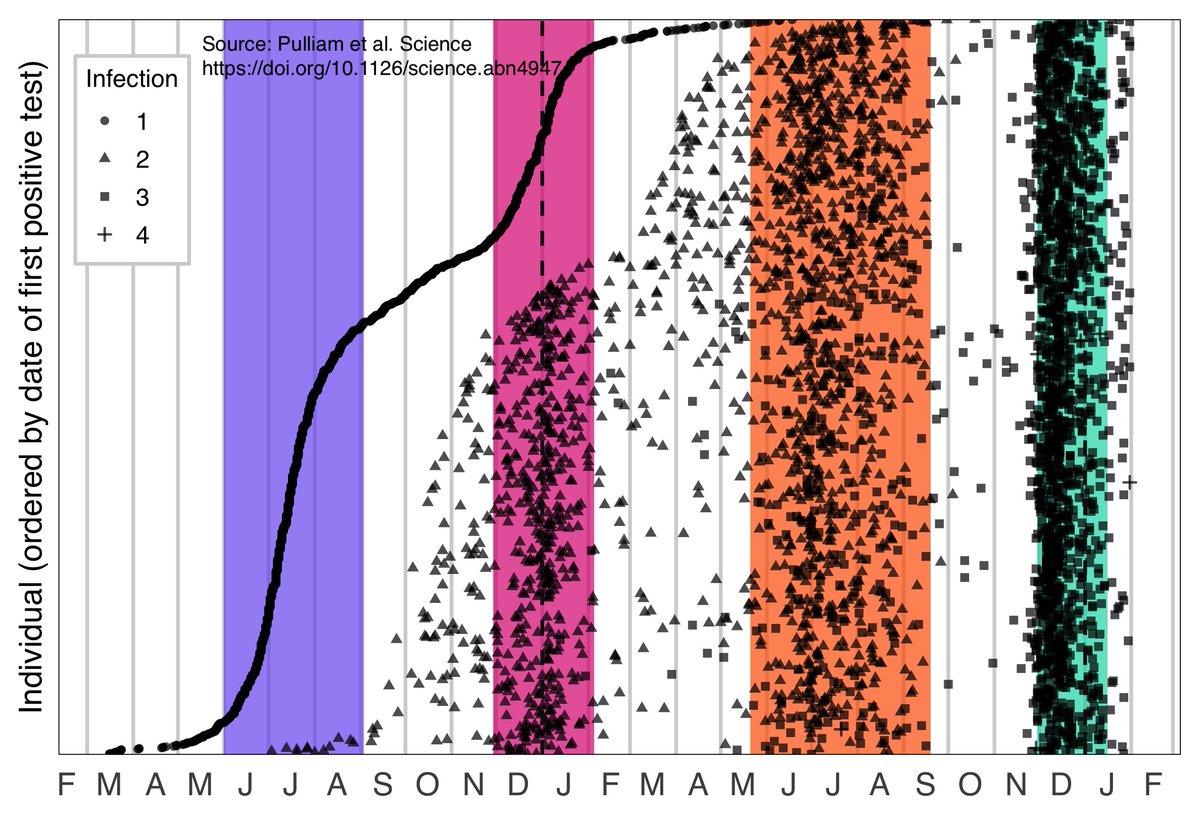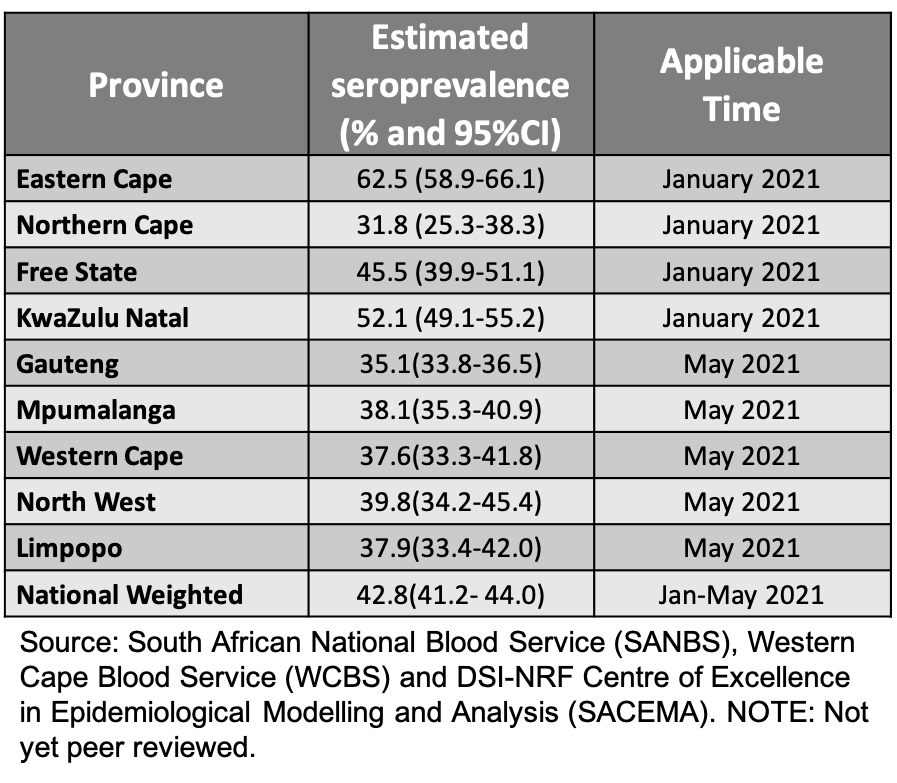
[Thread] I am pleased to share that this work is now published @ScienceMagazine
science.org/doi/10.1126/sc…
#SACEMA @nicd_sa @hivepi @scienceSUN @NRF_News @carivs @jd_mathbio @GoNevashan @Dr_Groome @saCOVID19mc
science.org/doi/10.1126/sc…
#SACEMA @nicd_sa @hivepi @scienceSUN @NRF_News @carivs @jd_mathbio @GoNevashan @Dr_Groome @saCOVID19mc
https://twitter.com/SACEMAdirector/status/1466459301598351371
We show that reinfection risk (blue) increased with the emergence of the #Omicron variant and has stabilized at a higher level than was seen with prior variants. 

There are two main changes between the published paper and the preprint released in December. First, the published version of the paper has been updated to include data through the end of January 2022.
Second, we fixed an inconsistency in the calculation of the time-varying hazard coefficients that previously enhanced the apparent decrease in primary infection hazard. The latter change has a quantitative impact on the results, but the main conclusion remains unchanged.
We identified 105,323 suspected second reinfections among 2,942,248 individuals in South Africa with laboratory-confirmed SARS-CoV-2 who had a positive test result at least 90 days prior to 31 January 2022. 

Recent reinfections have occurred in individuals whose primary infections occurred across all three prior waves, with the most having their primary infection in the Delta wave. 

During the fourth wave, we also saw an increase in the risk of reinfections in individuals who had already had multiple suspected infections. We identified 1,778 individuals with suspected third infections and 18 individuals with suspected fourth infections. 

A strength of our analysis is that we monitor reinfection in real time at the population level. Our findings have since been confirmed using more traditional epidemiological approaches in the UK and Qatar:
imperial.ac.uk/media/imperial…
assets.publishing.service.gov.uk/government/upl…
doi.org/10.1056/NEJMc2…
imperial.ac.uk/media/imperial…
assets.publishing.service.gov.uk/government/upl…
doi.org/10.1056/NEJMc2…
Data and code are available on @ZENODO_ORG: zenodo.org/record/6108448 (data), zenodo.org/record/6347439 (code)
• • •
Missing some Tweet in this thread? You can try to
force a refresh





